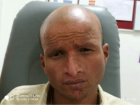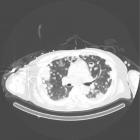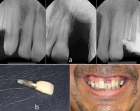About University of Nebraska Medical Center
University of Nebraska Medical Center
Articles by University of Nebraska Medical Center
Impact of four obesity interventions on biometric measures of individuals positive and negative for food addiction
Published on: 28th September, 2018
OCLC Number/Unique Identifier: 7900044985
Obesity is a major contributor to ill health and numerous comorbidities globally. Recent studies suggest that addictive-like tendencies toward foods, especially highly processed foods, contribute to this epidemic. Therefore, interventions used to treat substance-use disorders may be effective for treating overweight/obese patients with food addiction (based on the Yale Food Addiction Scale, version 2.0). This pilot study evaluated four interventions, selected because of their effectiveness in the treatment of substance-use disorders [motivational interviewing, pharmacotherapy (naltrexone-bupropion), pharmacotherapy with motivational interviewing, information control (diet and physical activity instruction)], in overweight/obese individuals with and without food addiction. The food addiction construct identified a distinctive subset of overweight/obese individuals. Through one month, response to interventions differed between food addiction phenotypes with those who were positive for food addiction showing similar or less response to the interventions than those who were negative for the trait. This suggests that individuals with addictive-like tendencies toward food may require longer and more intensive intervention to achieve their goals. The greatest changes in biometric measures occurred between baseline and 1 month during which time participants were attending weekly intervention sessions. Across all groups, those who attended more sessions (dose) was correlated with a reduction in body mass index.
Role of community health fairs in providing health services, improving health of rural residents
Published on: 11th May, 2020
OCLC Number/Unique Identifier: 9272371549
Introduction: Obesity (BMI ≥ 30 kg m-2) is epidemic globally and is associated with increased risk for a wide range of physical and mental health comorbidities. This is a particular concern for rural residents who have a greater rate of obesity than urban residents, but are disadvantaged in obtaining care because of a shortage of health care professionals. Community health fairs provide an opportunity for rural residents to receive health care services and education at reduced or no cost. Therefore, this study explored the role of community health fairs for providing health services and improving the health of residents in a rural community where obesity is a serious health concern.
Methods: This study involved a retrospective longitudinal analysis of data collected during community health fairs conducted in a rural western Nebraska, USA community during 2014, 2015, and 2016 (n = 83). The Planned Approach to Community Health (PATCH) framework was used to target health education in this rural community. This approach involved 1. Mobilizing the community (via health fairs), 2. Collecting and organizing data (from consented attendees), 3. Selecting health priorities (obesity), 4. Developing a comprehensive intervention (nutrition and physical activity education), and 5. Evaluating the effectiveness of the framework (declines in measures of obesity over time). Analyses characterized BMI, percent body fat, visceral fat, and BP and explored differences between genders. The sample was recruited by advertising with flyers for health fairs at the College of Nursing. Most booths provided printouts of results for participants in order for them to keep and track their health information. Once potential participants arrived at the health fair site, there were asked if they would like to participate in the study via an invitation letter. They could then decline or sign the consent.
Results: Percent body fat and visceral fat level differed between genders (p = < .001 and .001, respectively). Mean body fat levels (women 39.4%, men 28.8%) were unhealthy. Mean visceral fat level was unhealthy in men (16), but healthy in women (10). BMI and systolic and diastolic blood pressure did not differ between genders. Mean BMI was 31 kg m-2; 33% of participants were overweight, 44% were obese. Mean systolic and diastolic BP were 134 and 78 mg Hg, respectively. Most participants were hypertensive (systolic: men 57%, women 32%; diastolic: men 24%, women 7%) or prehypertensive (systolic: men 21%, women 39%; diastolic: men and women 36%).
Conclusion: Obesity and high BP were common in this rural population, supporting the need for effective education and intervention efforts to address these health issues. Health fairs provide a manner in which to reach community persons needing referrals to local clinics, mental health providers and physicians. Education provided at such events is valuable as well and may in fact be the only health care contact they receive. Though community health fairs provide an economical way for individuals to receive screenings and health information, few men participated and few individuals attended in multiple years. The lack of repeat attendees prevented assessment of the efficacy of the education intervention. Means of enhancing participation, particularly by men and previous attendees, need to be explored. Repeatedly attending health fairs enables participants to monitor their progress, seek physical and mental health screenings and discuss any health concerns and helps researchers assess the efficacy of interventions.
Targeted community outreach events to deliver healthcare to diverse rural populations
Published on: 24th June, 2020
OCLC Number/Unique Identifier: 8628651982
Introduction: Rural populations often experience disparities in health and access to and quality of healthcare. Such disparities may differ among subpopulations. Community outreach events provide an opportunity for rural residents to receive health services and education at reduced or no cost. This project builds on our previous experience with community health fairs by providing health events that target specific underserved subpopulations (rural youth, Latinas, and men).
Methods: Our first event provided free sports physicals to area students. The second provided free health screenings to men during an annual agricultural event (Bean Day). The third was a cardiovascular health event for Latinas that featured free or reduced cost health screenings and other health-related and culturally appropriate activities.
Results: Thirty-five students received sports physicals, enabling them to participate in sports. Twenty-two Bean Day participants, primarily men, received health screenings; four were hypertensive, three were overweight, and 12 were obese. Over 100 women attended Latina Red Dress and received health services and education. For many in these subpopulations, events such as this provide the only healthcare they receive. During all three events, participants received education regarding any health issues of concern and referrals to local health clinics when appropriate (e.g. hypertension, high glucose levels).
Conclusion: Community health events such as these provide culturally appropriate and economical means to deliver health services and education, enabling participants to identify and address any health concerns. Targeting events for underserved subpopulations helped engage them in their healthcare. These findings support the need for effective education and intervention efforts to address physical and mental health concerns in this rural area. This was our first contact with these particular populations whom we know need intervention to receive health care. Moving forward through 2020 and beyond we will have future health fairs in the same groups in order to assess if the health fairs are indeed impacting health of these children, men and minority women.

If you are already a member of our network and need to keep track of any developments regarding a question you have already submitted, click "take me to my Query."


















































































































































